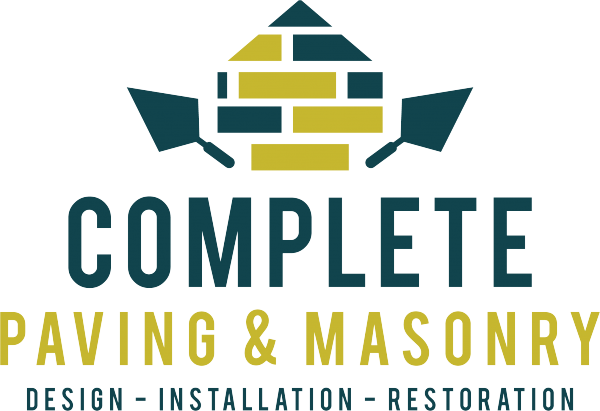Social and Cultural Evolution
Social and cultural evolution in Hyde Park, Massachusetts has been marked by a rich tapestry of influences that have shaped the community into what it is today. Founded in 1868, Hyde Park initially served as a haven for working-class families seeking a respite from the hustle and bustle of nearby Boston. The influx of Irish, German, and Italian immigrants during the late 19th and early 20th centuries added layers of diversity to the community, fostering a vibrant and interconnected tapestry of cultures.
The establishment of Masonry Hyde Park in the late 1800s further enriched the social fabric of the area, providing a platform for community engagement and collaboration among residents. With the construction of churches, schools, and social clubs, Masonry Hyde Park became a focal point for social gatherings and cultural exchange, further solidifying the neighborhood’s reputation as a tight-knit and welcoming community. Today, the legacy of Masonry Hyde Park endures, serving as a testament to the enduring spirit of unity and cooperation that has defined the social and cultural landscape of Hyde Park for generations.
Community Diversity and Civic Movements
Community diversity is a hallmark of Hyde Park’s history. Over the years, Hyde Park has become a melting pot of different cultures and backgrounds, contributing to its vibrant and dynamic atmosphere. Residents come from various ethnicities and walks of life, creating a rich tapestry of identities within the neighborhood. This diversity has fostered a sense of inclusivity and tolerance, with community members actively engaging in initiatives to celebrate and preserve their unique backgrounds.
Civic movements have played a significant role in shaping the landscape of Hyde Park. From grassroots organizations advocating for social justice to community-led initiatives focusing on environmental sustainability, residents have always shown a deep commitment to improving their neighborhood. One notable example is the Masonry Hyde Park group, which has been instrumental in promoting community cohesion and organizing events that foster a sense of belonging among residents. Through these collective efforts, Hyde Park continues to evolve as a hub of civic engagement and activism.
Economic Transformation
Economic Transformation
Masonry Hyde Park underwent a significant economic transformation in the late 20th century. As the industrial sector declined, the neighborhood shifted towards a service-based economy, characterized by the growth of small businesses, service industries, and healthcare facilities. This shift brought forth a new era of economic opportunities for the residents of Hyde Park, diversifying the job market and contributing to the neighborhood’s resilience in the face of industrial decline. Additionally, the service-based economy helped bring in new sources of revenue, attracting investments that further bolstered local businesses and community development efforts.
The economic transformation of Masonry Hyde Park was not without its challenges. The shift from an industrial to a service-based economy brought about issues related to employment stability, income disparities, and workforce retraining. Furthermore, the neighborhood grappled with the need to adapt to changing consumer demands and technological advancements in order to remain competitive in the evolving economic landscape. Despite these challenges, Masonry Hyde Park’s transition to a service-based economy laid the foundation for continued growth and revitalization, setting the stage for the neighborhood’s modern economic landscape.
Shift from Industrial to Servicebased Economy
The transition of Hyde Park from an industrial-focused economy to a service-based one marked a significant shift in the town’s economic landscape. In the late 20th century, the decline of industries such as paper manufacturing and ironworks led to the rise of service sectors like healthcare, education, and retail. This shift brought about a diversification of job opportunities and a new focus on providing services to the community. As a result, many residents found employment in fields beyond traditional manufacturing, illustrating the adaptive nature of the town’s workforce.
Masonry Hyde Park played a crucial role in the economic transformation of the town. As industrial buildings were repurposed or replaced by modern structures, masonry work became essential in constructing new commercial and residential spaces. The demand for skilled masons grew steadily, creating employment opportunities within the construction sector. This shift not only revitalized the physical landscape of Hyde Park but also contributed to the town’s economic revitalization by supporting the growth of new businesses and industries.
ModernDay Hyde Park
Modern-day Hyde Park retains its strong sense of community spirit and historical charm. Residents take pride in the neighborhood’s rich heritage and historic architecture, with many homes dating back to the late 19th and early 20th centuries. The vibrant mix of cultural influences is evident in the local restaurants, shops, and community events, reflecting the diverse population that calls Hyde Park home.
In recent years, efforts have been made to preserve and revitalize Masonry Hyde Park. These initiatives include urban renewal projects aimed at enhancing the neighborhood’s infrastructure and amenities. Despite facing contemporary challenges such as gentrification and economic disparities, Hyde Park remains a close-knit community that values its history while embracing opportunities for growth and development.
Urban Renewal Projects and Contemporary Challenges
Urban renewal projects have played a significant role in shaping the modern landscape of Hyde Park. These initiatives aimed to revitalize and transform the community by improving infrastructure, restoring historical buildings, and creating green spaces. One notable project in Masonry Hyde Park involved the renovation of several vacant industrial buildings into mixed-use developments, bringing new life and economic opportunities to the neighborhood.
Despite the positive effects of urban renewal projects, Hyde Park still faces contemporary challenges in terms of affordable housing, transportation access, and community development. Gentrification pressures have also increased in recent years, leading to concerns about displacement and the preservation of the area’s unique character. Balancing the need for modernization with the preservation of Hyde Park’s historical identity remains a key challenge for local policymakers and residents alike.
FAQS
When was Hyde Park founded?
Hyde Park was founded in 1868 as an independent town before becoming part of Boston in 1912.
What were some of the key industries in early Hyde Park?
Early Hyde Park was known for its manufacturing industries, including paper mills, shoe factories, and ironworks.
How has the community in Hyde Park evolved socially and culturally over time?
The community in Hyde Park has evolved to become more diverse, with a mix of ethnicities and cultures contributing to its vibrant social fabric.
What are some notable civic movements in Hyde Park’s history?
Hyde Park has been the site of various civic movements, including efforts to improve public education, promote civil rights, and enhance community engagement.
How has Hyde Park’s economy transformed over the years?
Hyde Park has shifted from an industrial economy to a service-based economy, with a focus on healthcare, education, and retail sectors.
What are some of the urban renewal projects that have taken place in modern-day Hyde Park?
Modern-day Hyde Park has seen various urban renewal projects aimed at revitalizing the community, including infrastructure improvements, housing developments, and commercial revitalization efforts.
What are some of the contemporary challenges facing Hyde Park?
Some of the contemporary challenges facing Hyde Park include affordable housing shortages, economic disparities, and infrastructure needs that require ongoing attention and investment.
Related Links
Masonry Hyde Park
Is Hyde Park MA a good neighborhood?
What are the demographics of Hyde Park Boston?



